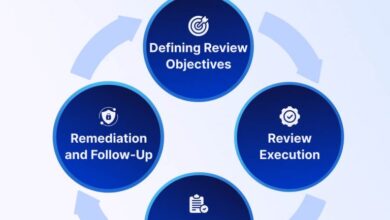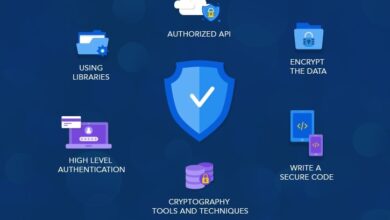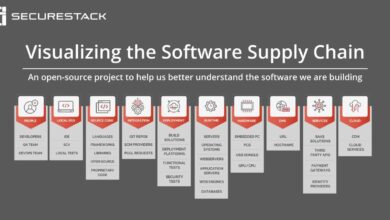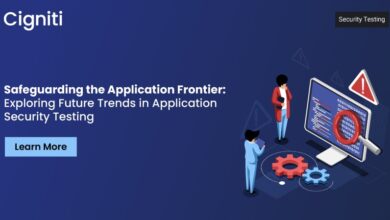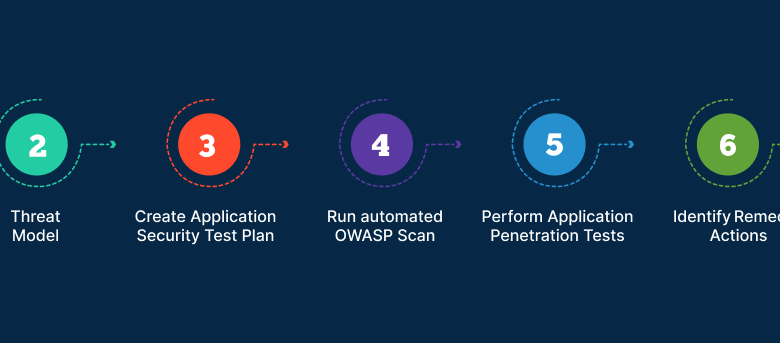
New Pay-Per-Scan Model Launched for AppSec Testing
New pay per scan model launched for appsec testing – New pay-per-scan model launched for AppSec testing – it sounds revolutionary, right? Forget endless subscriptions and hefty upfront costs! This new model shakes up the application security testing (AppSec) world, offering a flexible, pay-as-you-go approach. Imagine only paying for the scans you actually need, adjusting your security budget to perfectly match your development sprints. This post dives deep into this exciting development, exploring its benefits, challenges, and the potential impact on the future of AppSec.
We’ll cover everything from the technical nitty-gritty of implementation and pricing strategies to the user experience and its potential to reshape how we approach application security. Get ready to explore a future where AppSec testing is more accessible, affordable, and integrated into your workflow than ever before!
Market Analysis of the New Pay-Per-Scan Model
The application security testing (AppSec) market is a dynamic landscape, constantly evolving to meet the growing demands of businesses striving to secure their software applications. The introduction of a pay-per-scan model represents a significant shift in this market, challenging established norms and potentially reshaping the competitive landscape. This analysis explores the implications of this new pricing strategy.
Competitive Landscape and Existing Pricing Models
The AppSec market is populated by a diverse range of vendors, offering various solutions and services. Major players include established names like Snyk, Veracode, and Synopsys, alongside numerous smaller, specialized firms. Currently, the most prevalent pricing models are subscription-based, offering access to the platform and its features for a recurring fee. Some vendors also offer tiered subscription plans based on usage or features, providing flexibility for different needs and budgets.
Licensing models, particularly for on-premise solutions, are also common, involving upfront costs and ongoing maintenance fees. A few vendors offer project-based pricing for specific engagements, but a true pay-per-scan model is relatively novel.
Comparison of Pay-Per-Scan and Traditional Licensing Models
The pay-per-scan model differs significantly from traditional licensing and subscription models. Traditional licensing models often involve high upfront costs and ongoing maintenance fees, making them a significant investment, especially for smaller organizations or those with limited budgets. Subscription models offer predictable monthly or annual costs, providing a more manageable budgeting approach. However, they may lead to unused capacity if scans are infrequent.
The pay-per-scan model offers a more flexible approach, allowing businesses to pay only for the scans they need. This is particularly beneficial for organizations with sporadic testing needs or those who want to control their AppSec spending more precisely. However, it can lead to unpredictable costs if testing needs fluctuate significantly.
Potential Market Impact of the Pay-Per-Scan Model
The introduction of the pay-per-scan model has the potential to disrupt the AppSec market in several ways. Firstly, it lowers the barrier to entry for smaller businesses and startups, allowing them to access professional AppSec testing without committing to substantial upfront investments. Secondly, it may encourage more frequent testing, as the cost of each scan is relatively low. This increased frequency could lead to earlier detection of vulnerabilities and improved overall application security.
However, the model also presents challenges. Organizations may need to carefully manage their scan frequency to avoid unexpected cost increases, and the lack of predictable budgeting could be a drawback for some. Furthermore, the pay-per-scan model might incentivize less thorough testing if users prioritize cost-effectiveness over comprehensive security assessments.
Advantages and Disadvantages Compared to Subscription-Based Models
| Feature | Pay-per-Scan | Subscription | Comparison |
|---|---|---|---|
| Cost | Variable, potentially lower for infrequent scans | Fixed monthly/annual fee | Pay-per-scan offers cost flexibility but can lead to unpredictable expenses; subscriptions provide predictable budgeting but may lead to unused capacity. |
| Scalability | Highly scalable; easily adjust to changing needs | Scalability depends on the subscription tier; may require upgrades for increased usage. | Pay-per-scan offers greater flexibility in scaling testing frequency; subscription models require planning and potential upgrades. |
| Predictability | Low predictability; costs can fluctuate depending on usage. | High predictability; costs are consistent each billing cycle. | Subscriptions provide budget stability, while pay-per-scan requires more careful cost management. |
| Commitment | Low commitment; only pay for what is used. | Higher commitment; requires long-term contract (often). | Pay-per-scan suits organizations with variable needs; subscriptions better suit those with consistent testing requirements. |
Technical Aspects of the Pay-Per-Scan Model

Implementing a pay-per-scan model for application security (AppSec) testing requires careful consideration of both technical and business aspects. This model shifts the pricing from a subscription-based system to one where customers pay only for the scans they actually perform, offering greater flexibility and potentially lower costs for infrequent testing needs. This post dives into the technical intricacies of such a system.
Technical Implementation of a Pay-Per-Scan Model
The core of a pay-per-scan model lies in a robust and scalable architecture capable of handling individual scan requests, processing payments, and managing user accounts. This typically involves a microservices architecture where different components handle distinct functionalities. For instance, one service might handle scan requests, another the payment processing, and a third the storage and retrieval of scan results.
A key component is a secure API allowing seamless integration with existing CI/CD pipelines. This architecture allows for horizontal scaling, enabling the system to handle a surge in concurrent scan requests without compromising performance. The system must also track usage meticulously, ensuring accurate billing and reporting. Database choices will depend on the scale of the operation; a highly scalable solution like a NoSQL database might be preferred over a traditional relational database for larger deployments.
Types of Scans and Associated Costs
Different types of AppSec scans require varying computational resources and time, resulting in different pricing structures. A simple static analysis scan might cost significantly less than a dynamic analysis scan involving runtime testing. Penetration testing, being the most intensive, would command the highest price.
- Static Analysis: This scan analyzes the application’s source code without executing it. It identifies vulnerabilities like SQL injection flaws, cross-site scripting (XSS), and insecure authentication mechanisms. Cost: $X per scan (e.g., $10 – $50 depending on code size and complexity).
- Dynamic Analysis: This scan involves running the application and observing its behavior to detect vulnerabilities. It’s more comprehensive than static analysis but requires a running instance of the application. Cost: $Y per scan (e.g., $50 – $200 depending on application complexity and testing scope).
- Software Composition Analysis (SCA): This scan analyzes the application’s dependencies to identify known vulnerabilities in open-source components. Cost: $Z per scan (e.g., $25 – $100 depending on the number of dependencies).
- Penetration Testing: This involves simulated attacks to identify security weaknesses. This is typically a more expensive and time-consuming process. Cost: Negotiated per engagement, depending on scope and duration (e.g., $1000 – $10,000+).
Note: These are hypothetical costs. Actual pricing would depend on market conditions, competition, and the specific features offered.
Security and Privacy Considerations
Security and privacy are paramount in a pay-per-scan model. The system must protect sensitive application code and test results from unauthorized access. This requires robust authentication and authorization mechanisms, data encryption both in transit and at rest, and regular security audits. Compliance with relevant data privacy regulations (e.g., GDPR, CCPA) is crucial. Data minimization principles should be followed, storing only the necessary information for billing and reporting.
Regular security assessments and penetration testing of the pay-per-scan platform itself are essential to ensure its integrity.
Hypothetical API for CI/CD Integration
A well-designed API simplifies the integration of the pay-per-scan model into existing CI/CD pipelines. The following Artikels a hypothetical RESTful API:Endpoint: `/api/v1/scan`Method: POSTRequest Body (JSON):“`json “apiKey”: “YOUR_API_KEY”, “scanType”: “static”, “applicationUrl”: “https://example.com”, “sourceCode”: “base64EncodedSourceCode” // or a reference to a file location if supported“`Response (JSON):“`json “scanId”: “uniqueScanId”, “status”: “queued”, “cost”: 10.00“`The API would allow developers to initiate scans, retrieve results, and manage their account balance.
Secure authentication mechanisms (like OAuth 2.0) would protect API keys. Webhooks could be used to notify developers about scan completion and results. Error handling and detailed responses would be crucial for a seamless user experience.
Financial Implications and Business Models
The shift to a pay-per-scan model for application security (AppSec) testing presents a compelling opportunity to reshape the industry’s financial landscape. This model moves away from traditional subscription-based pricing, offering a more granular and potentially more attractive approach for both providers and consumers. Understanding the implications of this shift, particularly concerning pricing strategies and revenue generation, is crucial for success.Pricing Strategies and Revenue GenerationThe beauty of a pay-per-scan model lies in its flexibility.
It allows for tiered pricing structures based on factors like scan depth, frequency, report detail, and the number of applications being tested. This granular approach caters to a wider range of client needs and budgets, maximizing potential revenue. For example, a basic scan might focus solely on identifying critical vulnerabilities, while a premium scan could include a deeper analysis, penetration testing, and detailed remediation guidance.
This tiered approach allows for upselling and cross-selling opportunities, driving revenue growth beyond the initial scan.
Pricing Tiers and Associated Features
A successful pay-per-scan model typically involves several pricing tiers. Consider these examples:
- Basic Scan: This tier offers a fundamental vulnerability scan, focusing on high-severity issues. It includes a concise report highlighting critical vulnerabilities and their potential impact. The price point is low, targeting smaller businesses or those with limited budgets. Think of this as a quick health check for your application’s security.
- Standard Scan: This tier expands on the basic scan by including a broader range of vulnerability checks, covering a wider spectrum of potential threats. The report is more detailed, offering more context and remediation recommendations. This is suitable for companies needing a more comprehensive security assessment but without the need for deep penetration testing.
- Premium Scan: This tier represents the most comprehensive option, incorporating features such as penetration testing, detailed code analysis, and extended support. The report provides an in-depth analysis of vulnerabilities, including potential attack vectors and mitigation strategies. This is ideal for organizations with stringent security requirements and a need for proactive threat management.
The specific pricing for each tier will depend on various factors, including market research, competitor analysis, and the cost of providing the service. For instance, a basic scan might cost $50 per scan, while a premium scan could cost $500 or more, depending on complexity and depth of analysis.
Potential Business Models Utilizing a Pay-Per-Scan Approach
Several business models can effectively leverage a pay-per-scan approach for AppSec testing.
- Freemium Model: Offer a limited number of free scans to attract users, then charge for additional scans. This is a good strategy for acquiring new customers and demonstrating the value of the service.
- Subscription with Pay-Per-Scan Add-ons: Offer a base subscription with a limited number of scans, allowing users to purchase additional scans as needed. This combines the predictability of subscription revenue with the flexibility of pay-per-scan pricing.
- Pure Pay-Per-Scan: This model focuses solely on per-scan charges, providing a simple and transparent pricing structure. This model is suitable for businesses that perform scans infrequently or require highly customized testing solutions.
These models allow for different levels of engagement and cater to a variety of customer needs and preferences. The success of each model depends heavily on effective marketing and customer acquisition strategies. For example, a freemium model requires a strong marketing push to attract users to the free tier and then convert them to paying customers.
Revenue Projections and Profitability
Predicting revenue is inherently complex, depending on factors such as market size, customer acquisition cost, and pricing strategy. However, a pay-per-scan model can be highly profitable if properly managed. For example, a company offering three pricing tiers (Basic, Standard, Premium) with an average revenue per scan of $150 and a consistent customer base of 100 clients performing an average of 2 scans per month could generate $30,000 in monthly revenue.
Profitability will depend on the cost of providing the service (infrastructure, personnel, etc.) and operational efficiency. A well-structured pay-per-scan model, with effective cost management and scalable infrastructure, can achieve significant profitability.
User Experience and Adoption
The success of our new pay-per-scan AppSec testing model hinges on a positive user experience and high adoption rates. A seamless and intuitive process is crucial to encourage frequent use and build customer loyalty. This section will explore the user experience, potential adoption challenges, features to enhance engagement, and marketing strategies to drive adoption.The user experience of our pay-per-scan service should be straightforward and efficient.
Users should be able to easily initiate a scan, understand the pricing structure, access detailed reports, and manage their account with minimal friction. The entire process, from onboarding to receiving results, should be designed for clarity and ease of use. Imagine a user logging in, selecting their target application, choosing a scan type, and then effortlessly monitoring progress and reviewing the detailed report, all within a clean and intuitive interface.
This simplicity is key to a positive user experience.
User Experience Details
The initial onboarding process needs to be streamlined. Users should be able to quickly understand the service’s capabilities, pricing model, and scan options. Clear, concise documentation and interactive tutorials will be vital in guiding users through the process. A well-designed dashboard, providing an at-a-glance view of scan history, costs incurred, and upcoming scans, is essential. The reporting functionality must be robust, allowing users to easily filter, sort, and export results.
The ability to customize scan parameters to focus on specific vulnerabilities is also highly desirable. Finally, excellent customer support, readily available through multiple channels (email, phone, chat), is crucial for addressing user queries and resolving issues promptly.
Challenges in User Adoption
Several factors could hinder the adoption of a pay-per-scan model. Some users may be hesitant to commit to a model where costs are directly tied to the frequency of scans. Concerns about unpredictable expenses, especially for organizations with limited budgets, are likely. Another challenge could be the perceived complexity of the service, particularly for users with limited technical expertise.
Finally, convincing users to switch from existing, potentially free or bundled, AppSec solutions requires demonstrating the superior value proposition of our pay-per-scan model, highlighting the cost-effectiveness and accuracy of our scans, especially when compared to the costs associated with fixing vulnerabilities later.
Features to Improve User Engagement and Satisfaction
To enhance user engagement and satisfaction, several key features are needed. These include a robust API for seamless integration with existing DevOps pipelines, allowing for automated scans as part of the continuous integration/continuous delivery (CI/CD) process. Personalized dashboards, tailored to the user’s specific needs and preferences, will also increase engagement. Regular updates and improvements to the scan engine, ensuring the detection of the latest vulnerabilities, are essential.
Furthermore, offering different scan packages tailored to varying levels of security needs and budgets will attract a wider range of users. Finally, providing educational resources, such as webinars and blog posts, can help users understand the benefits of AppSec testing and effectively utilize the service.
Marketing Strategies to Promote the New Model
Effective marketing is crucial to drive adoption. The following strategies will be implemented:
- Targeted Content Marketing: Create blog posts, white papers, and case studies showcasing the benefits of the pay-per-scan model, focusing on cost savings and improved efficiency. Highlight specific customer success stories.
- Search Engine Optimization (): Optimize website content and marketing materials for relevant s to improve search engine rankings and organic traffic.
- Paid Advertising: Utilize targeted online advertising campaigns on platforms frequented by our target audience (e.g., LinkedIn, industry-specific websites).
- Social Media Marketing: Engage with potential customers on relevant social media platforms, sharing valuable content and participating in industry discussions.
- Webinars and Online Events: Host webinars and online events demonstrating the service’s capabilities and answering user questions.
- Partnerships and Alliances: Collaborate with complementary technology providers to expand reach and access new customer segments.
- Free Trials and Demonstrations: Offer free trials and product demonstrations to allow potential customers to experience the service firsthand.
Impact on Application Security Practices: New Pay Per Scan Model Launched For Appsec Testing

The introduction of a pay-per-scan model for application security testing will undoubtedly reshape how organizations approach securing their software. This shift from traditional, often fixed-cost, models will influence both the frequency and depth of security testing, ultimately impacting the overall security posture of applications. This new paradigm presents both advantages and challenges that need careful consideration.The pay-per-scan model directly incentivizes more frequent testing.
Because organizations only pay for the scans they run, the financial barrier to regular testing is significantly lowered. This is particularly beneficial for smaller organizations or those with limited security budgets who might previously have been restricted to infrequent, less comprehensive testing. However, this also necessitates a careful evaluation of scan frequency to avoid unnecessary expenses and to focus on the most critical application components.
Benefits and Drawbacks on Development Workflows
The impact on development workflows is multifaceted. A key benefit is the potential for earlier detection of vulnerabilities. The ease and lower cost of initiating scans can encourage developers to integrate security testing more seamlessly into their agile development cycles. This allows for faster remediation of identified vulnerabilities, reducing the overall risk and cost of security breaches.
However, a drawback is the potential for increased workload on developers, especially if the frequency of scans increases significantly without a corresponding increase in resources. This could lead to “scan fatigue” and a decreased attention to the results if not properly managed. A well-defined strategy for scan scheduling and prioritization is crucial to mitigate this risk.
Influence on the Frequency of Security Testing
The pay-per-scan model is expected to increase the frequency of security testing, particularly for applications undergoing frequent updates or changes. For instance, a company releasing a new feature weekly might opt for a weekly security scan to ensure continuous protection. This contrasts with traditional models where the cost of scans often limited testing to quarterly or even annual events.
However, this increased frequency necessitates a robust system for managing scan results and prioritizing remediation efforts. Over-reliance on automated scans without thorough manual analysis can lead to false positives and ultimately hinder efficient vulnerability management. For example, a company previously conducting a single penetration test per year might transition to monthly automated scans supplemented by quarterly penetration tests, leading to more comprehensive coverage.
Comparison of Security Posture with Traditional Methods
While the pay-per-scan model offers advantages in terms of frequency, the overall security posture achieved depends heavily on how the model is implemented and managed. In a scenario where scans are conducted frequently and results are promptly addressed, this model can achieve a significantly higher level of security than infrequent, traditional penetration tests. However, if the increased scan frequency leads to an overwhelming number of alerts that are not properly triaged and addressed, the overall security posture might not improve significantly.
Moreover, a solely automated scan-based approach may miss vulnerabilities that require more sophisticated manual penetration testing techniques. Therefore, a hybrid approach, combining automated scans with periodic manual penetration testing, may be the most effective strategy. A company that previously relied solely on annual penetration tests might find that a combination of automated weekly scans and quarterly manual penetration tests provides a more comprehensive and cost-effective approach to application security.
Future Trends and Predictions
The pay-per-scan model for application security testing is poised for significant growth, reshaping the AppSec landscape in several exciting ways. Its inherent flexibility and cost-effectiveness are attracting a wider range of organizations, pushing the boundaries of what’s possible in automated vulnerability detection. We can expect this trend to continue, accelerating the adoption of AppSec practices across various industries.The long-term impact of this model will be a democratization of AppSec.
Smaller businesses and startups, previously hindered by the high cost of traditional AppSec testing, will now have access to powerful tools and frequent scans. This increased accessibility will lead to a more secure digital ecosystem overall, as more applications are regularly assessed for vulnerabilities. The shift towards a more proactive security posture will also become more prevalent, moving away from reactive patching and towards continuous vulnerability management.
Increased Integration with DevOps and CI/CD Pipelines
The seamless integration of pay-per-scan models with existing DevOps and CI/CD pipelines will be a key driver of future adoption. We’re already seeing AppSec testing tools becoming more tightly integrated with platforms like Jenkins, GitLab CI, and Azure DevOps. This trend will only accelerate, allowing for automated vulnerability scanning as part of the software development lifecycle (SDLC). This automation will shorten feedback loops, allowing developers to address vulnerabilities quickly and efficiently, reducing the overall risk of security breaches.
Imagine a scenario where every commit triggers an automated scan, providing immediate feedback to the development team, ensuring that security is a built-in aspect of the development process rather than an afterthought.
Expansion of Supported Technologies and Frameworks, New pay per scan model launched for appsec testing
As the pay-per-scan model gains traction, we can expect a significant expansion in the range of technologies and frameworks supported by these tools. Currently, many tools focus on specific languages or platforms. However, the demand for broader coverage will drive the development of more versatile scanners capable of handling a wider variety of technologies, including emerging frameworks and cloud-native applications.
This broader support will enable organizations to comprehensively assess their entire application portfolio, regardless of its technological complexity. This will be crucial as organizations increasingly adopt microservices architectures and cloud-based deployments.
AI-Powered Vulnerability Prioritization and Remediation
The integration of artificial intelligence (AI) and machine learning (ML) will play a pivotal role in enhancing the effectiveness of pay-per-scan models. AI can analyze scan results, prioritize vulnerabilities based on their severity and potential impact, and even suggest remediation steps. This will significantly improve the efficiency of security teams, allowing them to focus their efforts on the most critical vulnerabilities first.
For instance, an AI-powered system could automatically identify a critical SQL injection vulnerability and suggest a specific code change to mitigate the risk, greatly accelerating the remediation process.
Hypothetical Scenario: Fintech Application Security
Imagine a rapidly growing Fintech startup, “QuickPay,” launching a new mobile payment application. Using a pay-per-scan model, QuickPay integrates a vulnerability scanner into its CI/CD pipeline. Every time a developer pushes code changes, an automated scan is triggered. This allows the team to identify and address vulnerabilities early in the development process, preventing costly security breaches and regulatory fines.
The pay-per-scan model’s flexibility allows QuickPay to scale its security testing as the application grows, ensuring that security remains a top priority throughout the application’s lifecycle. The result? QuickPay launches a secure, reliable payment application, fostering user trust and maintaining compliance with industry regulations. This proactive approach minimizes potential financial losses from security incidents and safeguards user data, ensuring the long-term success and sustainability of the business.
Final Thoughts
The launch of the pay-per-scan model for AppSec testing marks a significant shift in the industry. By offering a more flexible and cost-effective solution, this model has the potential to democratize AppSec, making it accessible to a wider range of organizations. While challenges remain in terms of user adoption and potential security concerns, the innovative pricing model holds immense promise for the future of application security.
It’s a game-changer, offering a more agile and responsive approach to securing applications in today’s fast-paced development environment. The future looks secure, and it’s pay-per-scan!
FAQ Overview
What types of scans are typically offered in a pay-per-scan model?
Common scan types include static analysis, dynamic analysis, and vulnerability assessments. Specific offerings vary depending on the provider.
How is pricing determined for each scan?
Pricing is typically based on factors like the complexity of the application, the type of scan, and the size of the codebase. Some providers may offer tiered pricing.
What security measures are in place to protect sensitive data during scans?
Reputable providers employ robust security measures, including encryption and secure data handling practices, to protect sensitive data throughout the scanning process.
Is this model suitable for all organizations?
While suitable for many, it might not be ideal for organizations requiring constant, high-volume scans. Subscription models might be more cost-effective in those cases.
